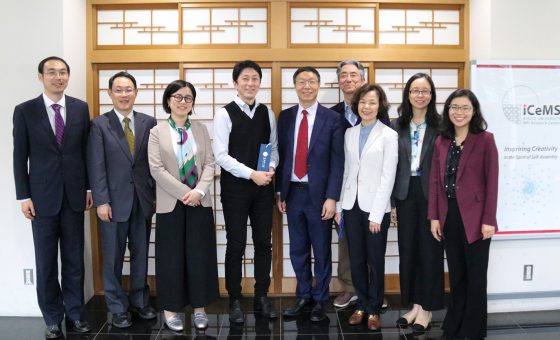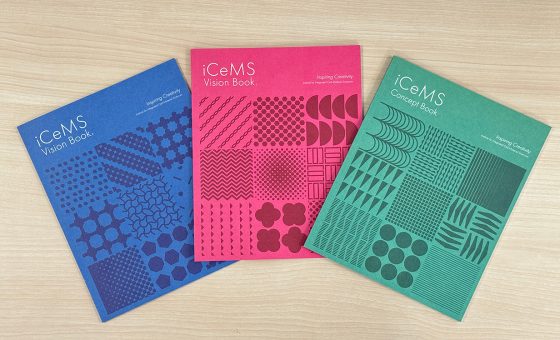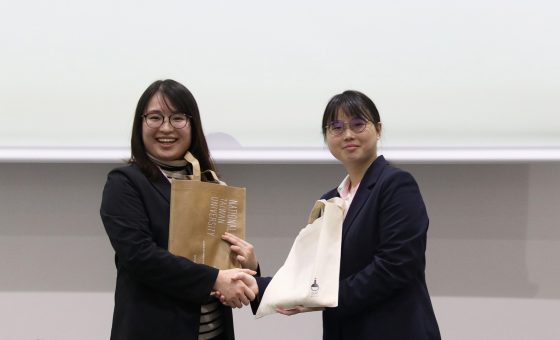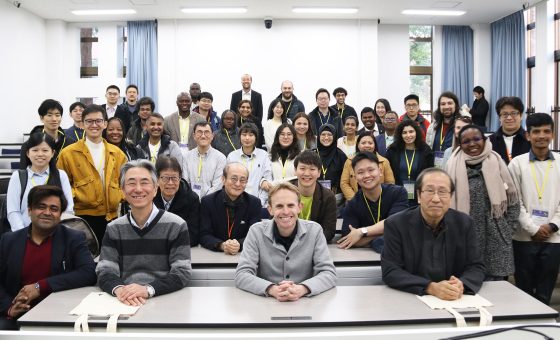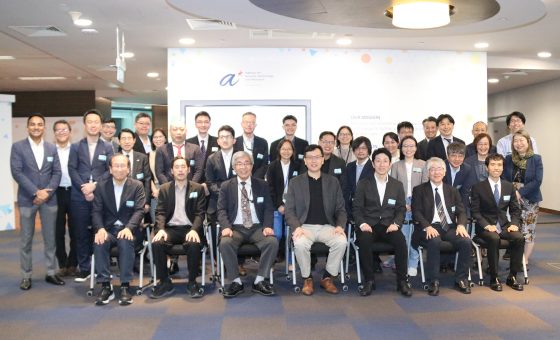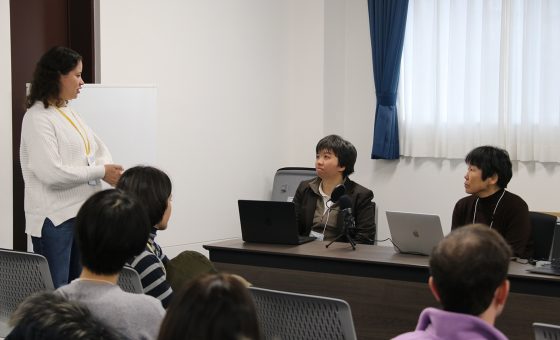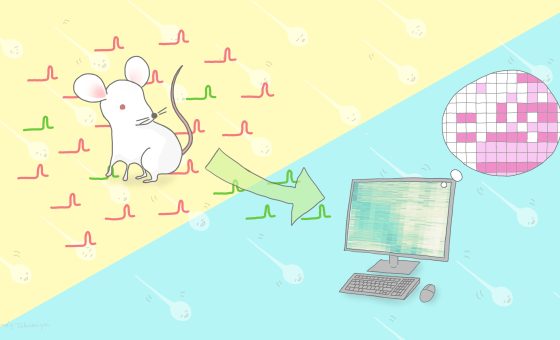iCeMS holds its 19th iCeMS Café
The 19th iCeMS Café was held on June 25 on the topic “Signals from Our Body: Observing and Manipulating Secrets of Health.” Dr Reiko Sakaguchi and her young colleagues from the iCeMS Kitagawa Group were the day’s guest speakers. A total of 11 people, including an office worker, a school teacher, a graduate student, and a retiree, participated in this Café.
The participants were divided into four tables, and they introduced themselves over a cup of cold barley tea. Dr Sakaguchi then introduced the research topic, comparing the signals that we receive from our body to the traffic signals we see in our daily lives.
Every reaction that occurs in the human body is controlled by various signals, such as small organic molecules, ions, and changes in temperature. If researchers can determine when, where and how much these signals are secreted, this information would be helpful in developing new medicines and medical treatments. However, the signals are so miniscule—on a nanoscale—that they cannot be seen by the human eye. Therefore, the first step toward innovation in this regard was to visualize these tiny signals that the human body sends out. Dr Sakaguchi and her colleagues have developed a sensor, scientifically called an “indicator” that enables us to observe and visualize cell temperature.
The next step was to use the sensor to make advanced research possible. Dr Sakaguchi and her colleagues have developed nano-materials that can first capture and confine the signals, and then later release the signals when necessary by being stimulated with light. Though still in its early stages, if this research enables us to manipulate these signals captured by our nano-material cages as “medicine” in the future, it could pave the way for an entirely new system of medicine. The “medicine” could be delivered to an inflamed point, then the signal inside could be taken out by being stimulated with light, and cure the inflammation.
After the scientists introduced their research, the participants divided into four tables again and talked freely with the researchers. The participants expressed concerns about the use of nano-materials for medical care and its side effects. They asked thoughtful questions: “Does the nano-material remain in the body?” “Is the nano-material safe?” “Whose cells are being used in the research?” Dr Sakaguchi and her colleagues answered each question, describing not only their work with nano-materials but also giving insight into their own daily life as researchers.
During the conversation over Kyoto sweets and tea, the participants relaxed and enjoyed the interaction. Time went by quickly in the friendly atmosphere. Perhaps the sugar in the sweets provoked the body’s signal for relaxing.
If you would like to share any thoughts with us or request notifications for upcoming gatherings like this one, please write to us at science-cafe@icems.kyoto-u.ac.jp. We look forward to hearing from you!
Written by Bunsuke Kawasaki (a first-year master’s student in the Graduate School of Education at Shiga University) and iCeMS Science Communication Group.






